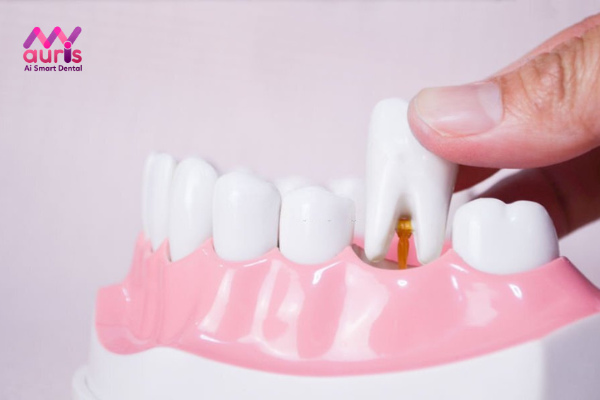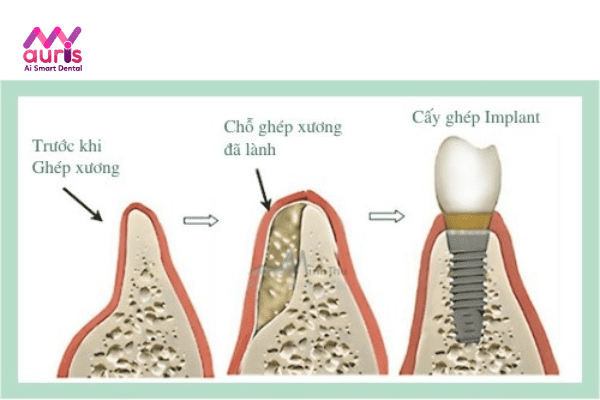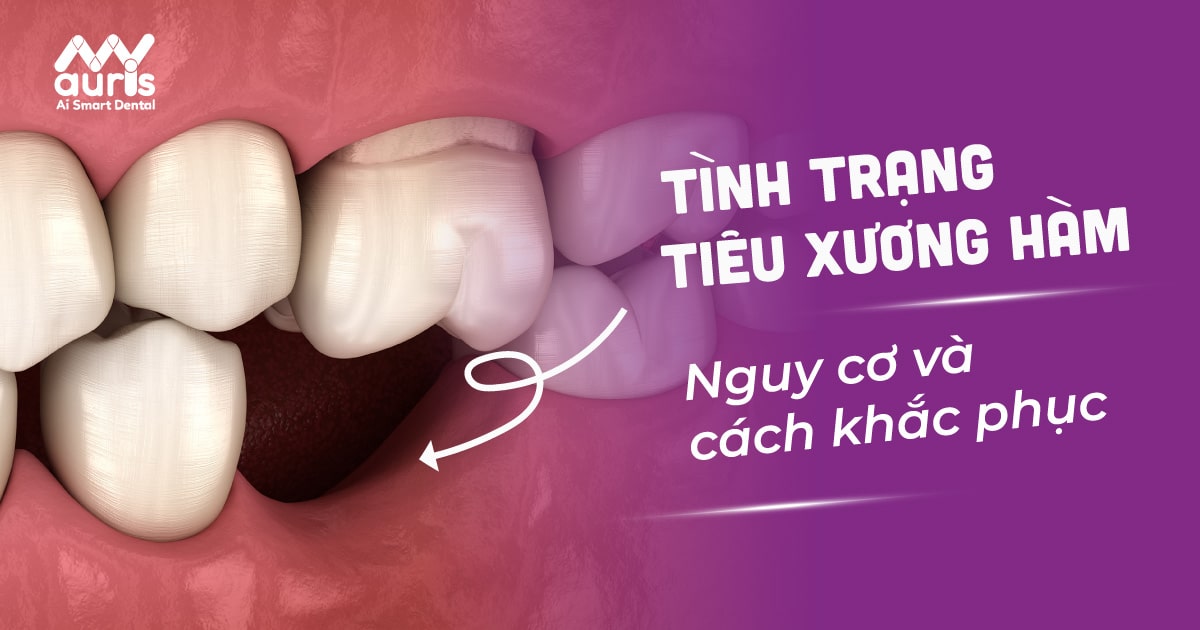Jaw bone loss is a serious consequence that occurs after losing teeth for too long. This will affect your aesthetics, chewing function and prevent you from getting dentures in the future. So how long does it take for bone loss after tooth loss? What to do to limit and overcome jaw bone loss? Please refer to this article for more information!
1. What is jaw bone resorption?
Jaw bone resorption is a condition of decline in the density, quantity and quality of the jaw bone, causing hollows at the site of lost teeth due to soft alveolar bone, causing the gums to shrink, the face to age and sag. The main cause of jaw bone loss is due to the loss of the chewing force exerted by the teeth on the jaw bone. Over time, bone loss will begin and cause serious consequences.

2. How long does it take for jawbone loss after losing a tooth?
The jawbone attaches very firmly to the tooth root, to support and enhance chewing ability. At the same time, the chewing force of the teeth creates stimulation on the bones to maintain stable bone cells. Therefore, when teeth are lost, the jawbone will have a gap at the location of the lost tooth root, there will no longer be any mechanical force (chewing force of the teeth), so it will gradually disappear.
How fast or slow bone loss will depend on each person’s constitution and oral health status. Normally, about 3 months after losing a tooth, bone density will gradually decrease. In the early stages, symptoms of bone loss are difficult to detect with the naked eye. Bone loss is most evident when the gums are atrophied, the face is unbalanced and older than age.

3. What are the risks of jaw bone loss?
Tooth bone loss causes many dental problems as well as facial aesthetics. When the alveolar bone is resorbed, the height and width of the bone wall is reduced, the gums recede, the gum margin is thin, and the tooth root is gradually exposed, creating favorable conditions for bacteria to attack inside the tooth root. Causes the gum space with bone loss to sink, causing loss of aesthetics at the site of bone loss.
Tooth bone loss also causes tooth migration, specifically manifested by the teeth above and adjacent to the bone loss area shifting to the adjacent position, causing the teeth to shift, causing loss of aesthetics.and weaker than normal, seriously affecting the chewing function

An inevitable consequence of dental bone loss is jaw bone loss, including upper jaw bone loss and lower jaw bone loss, changing the size of the jaw. This is clearly shown in cases of losing many teeth or losing all teeth, people wearing full dentures or dental bridges.
Teeth stand straight and firmly thanks to the support of the jawbone. If the bone is resorbed and collapsed, the tooth roots will deviate into the empty part of the lost bone, causing the teeth to become misaligned and easily shaken
Alveolar bone resorption causes the teeth to become misaligned, the teeth are therefore weakened, the jaw is sunken, causing a misaligned bite between the two jaws, and the bite force is not enough to chew and grind food. This also makes chewing difficult for the patient.
When the jaw bone is destroyed, the gums also shrink, making the cheeks sunken, affecting the overall harmony between the cheeks, nose, and chin on the body, making the face look old. Resorbed jawbone also hinders tooth restoration: because the teeth are displaced, the jawbone in the area of bone resorption sinks, making it very difficult to replant the tooth later.
4. How to effectively overcome jaw bone loss.
To avoid tooth bone loss, from the beginning, each person needs to maintain good oral health. Teeth should be removed periodically. If there are signs of gingivitis, treatment should be performed early. Especially when teeth are lost, they should be quickly replanted using a method to prevent bone loss, which is the Implant method.
Tooth loss leading to bone loss is a natural phenomenon, if there are no timely measures to restore dentures. To prevent bone loss is to get dental implants as soon as possible. Because when performing dental implants, you will have a Titanium post implanted inside the jawbone. Then, attach the abutment joint and porcelain crown to create a fake tooth that has the same structure as a real tooth.

The advantage of the dental implant method is that the implant root will replace the lost real tooth root, to maintain the chewing force on the jawbone. Prevent bone loss, tooth eruption, periodontitis and some other consequences caused by tooth loss. Compared to porcelain bridges and removable dentures, implants have many more advantages: Bringing harmonious aesthetics, chewing ability, food sensing similar to real teeth and nPrevent tooth loss consequences. Benign material, non-abrasive, safe for the body. The process is safe, no need to grind adjacent teeth. Long-term warranty, up to more than 20 years if well cared for.
The cost of dental implants is quite high, treatment time is also longer than porcelain bridges and removable dentures and only needs to be done once. Along with many other advantages, dental implants are the choice of many customers.
When you lose teeth, regardless of location, you need to go to the dental clinic for a doctor to directly review and provide timely treatment. Avoid bone loss because it will be difficult to restore teeth later.
>>> Learn more: How to make dentures if you lose all your teeth?





